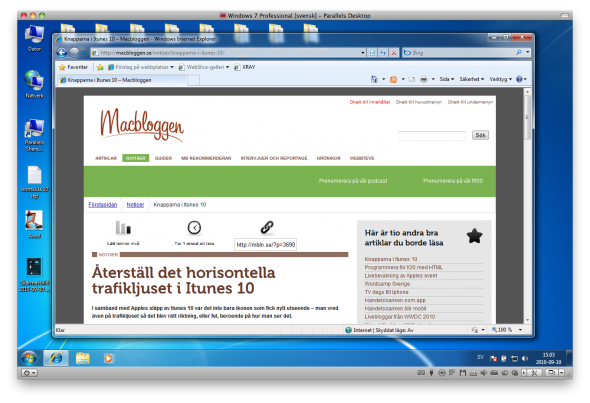CPUvirtualization involves a single CPU acting as if it were two separate CPUs. In effect, this is like running two separate computers on a single physical machine. Perhaps the most common reason for doing this is to run two different operating systems on one machine.
The CPU, or central processing unit, is arguably the most important component of the computer. It is the part of the computer which physically carries out the instructions of the applications which run on the computer. The CPU is often known simply as a chip or microchip.
VirtualBox for Mac OS X (Intel) v5.0.0 Beta 4 19.5.2015 VirtualBox for Mac OS X (Intel) v5.0.0 Beta 3 10.5.2015 VirtualBox for Mac OS X (Intel) v4.3.28 14.5.2015. Thus if you run it on a PowerPC Mac, it will emulate x86, and vice-versa. Other CPUs Q can emulate are: x86-64, PPC PREP, SPARC-32, MIPS and ARM. Windows 98 Windows 98 runs as fast as any PC I ran it on in the late ‘90s but it did display its legendary instability, with Internet Explorer crashing when it tried to view some websites. Special software called a hypervisor manages access between the virtual systems and the physical hardware resources. Virtualization enables quick deployment of computer systems, a way to quickly restore systems to a previously known good state, and the ability to migrate systems between physical hosts. Virtual pc for mac free download - Microsoft Virtual PC for Mac Update, Microsoft Virtual PC for Mac 7.0.3 Update, Zip Mac Files For a PC, and many more programs.
It's also possible to use CPU virtualization to run Windows® on a Mac® or Linux PC, or to run Mac OS® and Linux at the same time. Another benefit of virtualization is to allow a single computer to be used by multiple people at once.
The way in which the CPU interacts with applications is determined by the computer's operating system. The best known operating systems are Microsoft Windows®, Mac OS® and various open-source systems under the Linux banner. In principle a CPU can only operate one operating system at a time. It is possible to install more then one system on a computer's hard drive, but normally only one can be running at a time.
The aim of CPU virtualization is to make a CPU run in the same way that two separate CPUs would run. A very simplified explanation of how this is done is that virtualization software is set up in a way that it, and it alone, communicates directly with the CPU. Everything else which happens on the computer passes through the software. The software then splits its communications with the rest of the computer as if it were connected to two different CPUs.
One use of CPU virtualization is to allow two different operating systems to run at once. As an example, an Apple computer could use virtualization to run a version of Windows® as well, allowing the user to run Windows®-only applications. Similarly a Linux-based computer could run Windows® through virtualization. It's also possible to use CPU virtualization to run Windows® on a Mac® or Linux PC, or to run Mac OS® and Linux at the same time.
Another benefit of virtualization is to allow a single computer to be used by multiple people at once. This would work by one machine with a CPU running virtualization software, and the machine then connecting to multiple 'desks,' each with a keyboard, mouse and monitor. Each user would then be running their own copy of the operating system through the same CPU. This set-up is particularly popular in locations such as schools in developing markets where budgets are tight. It works best where the users are mainly running applications with relatively low processing demands such as web browsing and word processing.
CPU virtualization should not be confused with multitasking or hyperthreading. Multitasking is simply the act of running more than one application at a time. Every modern operating system allows this to be done on a single CPU, though technically only one application is dealt with at any particular moment. Hyperthreading is where compatible CPUs can run specially written applications in a way that carries out two actions at the same time.
JOINT SOLUTIONS
Oracle Cloud VMware Solution
Oracle Cloud VMware Solution provides a customer managed, native VMware-based cloud environment, installed within a customer’s tenancy. It offers complete control using familiar VMware tools. Customers can move or extend VMware-based workloads to the cloud without rearchitecting applications or retooling operations.
Key benefits of Oracle Cloud VMware Solution
Enjoy more control as you move seamlessly between on-premises and cloud environments, as well as hybrid deployments that span both. Oracle Cloud VMware Solution provides:
Familiar Tools and Processes
Work with the VMware solutions you already know, including vSAN, NSX, vSphere and HCX. This familiarity makes it incredibly easy to shift SDDC workloads to Oracle Cloud VMware Solution. The solution follows the VMware standard of 3+ bare metal hosts using a VMware Validated Design architecture, on VMware certified hardware.
Advanced Capabilities

Easily integrate with other Oracle Cloud solutions, including:

- Oracle Autonomous Database
- Oracle Exadata
- Oracle RAC
- Database as a service
- Virtual machines
- Bare metal compute instances
To make things simple, these all run in the same cloud data centers, on the same virtual cloud networks, and are accessible through the same portal and APIs.
A Single View
Gain a single view of your hybrid cloud environment – including your on premises data center and cloud operations – with VMware vCenter Server. This can run in your data center or in Oracle Cloud. Whatever works best for your team.
Virtualisering For Mac Torrent
Full Support
Virtualisering For Macbook
Access expanded technical support for Oracle products running on VMware virtualized environments – whether in the Oracle cloud, in other clouds or your data center. The fully supported, high-performance environment includes first-class customer service, making migrations quick and easy.